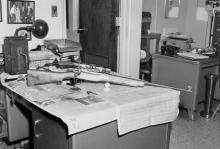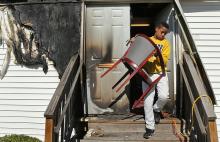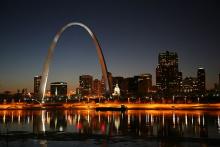Church Burning

IN JUNE 1964, 54 years ago this month, James Chaney, Andrew Goodman, and Michael “Mickey” Schwerner were asked by leaders of the Congress of Racial Equality to investigate the burning of a black church that had doubled as a Freedom School in Neshoba County, Miss.
More than 1,000 people, including college students, boarded buses bound for Mississippi that year. Over the preceding four years, these young people had witnessed a Southern sea change, from school desegregation to the integration of lunch counters, buses, bus depots, and movie theaters. They witnessed the Children’s March in Birmingham—hoses, dogs, terror faced down by black children who did not run. They stood their ground and they filled jails and they sang about overcoming. These previously silenced and subjugated people were now using the only thing they had—their bodies—to break through. And they had broken through.
Nashville, Greenville, Mont-gomery, Birmingham ... Now, it was Mississippi’s turn. James Meredith had served as the tip of the spear in 1962 when he registered for courses at Ole Miss. Mississippians lost their minds. The ensuing riot required 31,000 National Guards to quell it and left two dead and hundreds wounded. Meredith did register—and was graduated—but Medgar Evers, field secretary of the NAACP in Mississippi, was assassinated the following year, in his driveway.
Hours after parishioners celebrated Easter, which fell on May 1 in the Orthodox community, a fire gutted their landmark Manhattan cathedral.
“Our church has burned down last night,” read the announcement the next day on the website of the Serbian Orthodox Cathedral of St. Sava.

Police are stepping up patrols and trying to develop a profile of whomever has set six fires outside churches in predominantly black neighborhoods since Oct. 8, Police Chief Sam Dotson said.
The American Civil Liberties Union of Missouri and the Anti-Defamation League suggested a racial motive may be at play. In a prepared statement, the ACLU of Missouri’s executive director, Jeffrey Mittman, called the fires “domestic terrorism.”
“It is a sad truth that, throughout our nation’s history, African-Americans often have been met with astounding violence when they demand equality,” he wrote.
“Those who commit this violence seek to instill fear. This is why arson against predominantly black churches has been a frequent tool of white supremacy.”

A reward of up to $2,000 is being offered for information leading to the arrest of the culprit in a string of fires that have now hit six predominantly African-American churches in and around St. Louis.
Ebenezer Lutheran Church, at 1011 Theobald Street, is the latest church to report damage.
Capt. Garon Mosby, spokesman for the St. Louis Fire Department, said members of the congregation called authorities about 9:25 a.m. Oct. 18 after arriving for a worship service and noticing damage. The fire was already out by the time firefighters arrived, Mosby said.
Although he could not provide additional details, Mosby said that the damage was not extensive. But that the incident was being investigated along with the five other church fires that have happened in the area since Oct. 8.
In American political life, there is an issue about which we hear endless talk dealing with surfaces, and very little movement deep down in the body politic. Unless faced, it will prevent us from realizing our potential as a pluralistic democracy with a growing economy, and, instead, it will foster a poisonous resentment, even a hatred, that kills much of life's joy. The subject is race. Frequently, Americans have been unable to see deeper than skin color or eye shape to the heart and individuality of all our citizens. There were times when we allowed destructive impulses to triumph over our deeper awareness that we are all God's children. Occasionally, the violence of the few elicited the fears and seething anger of the many and prevented the possibility of racial harmony. It's an old story, and a sad one, too.
In 1963, four African-American girls in white dresses were talking prior to Sunday services in the ladies lounge of the 16th Street Baptist Church in Birmingham, Alabama. Suddenly, the church was ripped apart by a bomb that killed the young girls instantly. There had been other bombings in Birmingham aimed at halting blacks' progress toward racial equality but they had not penetrated the national consciousness. After that Sunday's explosion, people of all races and all political persuasions throughout the country were sickened in spirit.
Coming 18 days after Martin Luther King Jr. had shared his dream for America from the steps of the Lincoln Memorial, the bombing was a stark reminder of how violently some Americans resisted racial healing. Yet the sense of multiracial outrage and solidarity that came out of this tragedy--combined with the seminal leadership of President Lyndon Johnson--led to the Civil Rights Act of 1964, and to the hope that the search for racial equality could lead to the emergence of a spiritually transformed America.